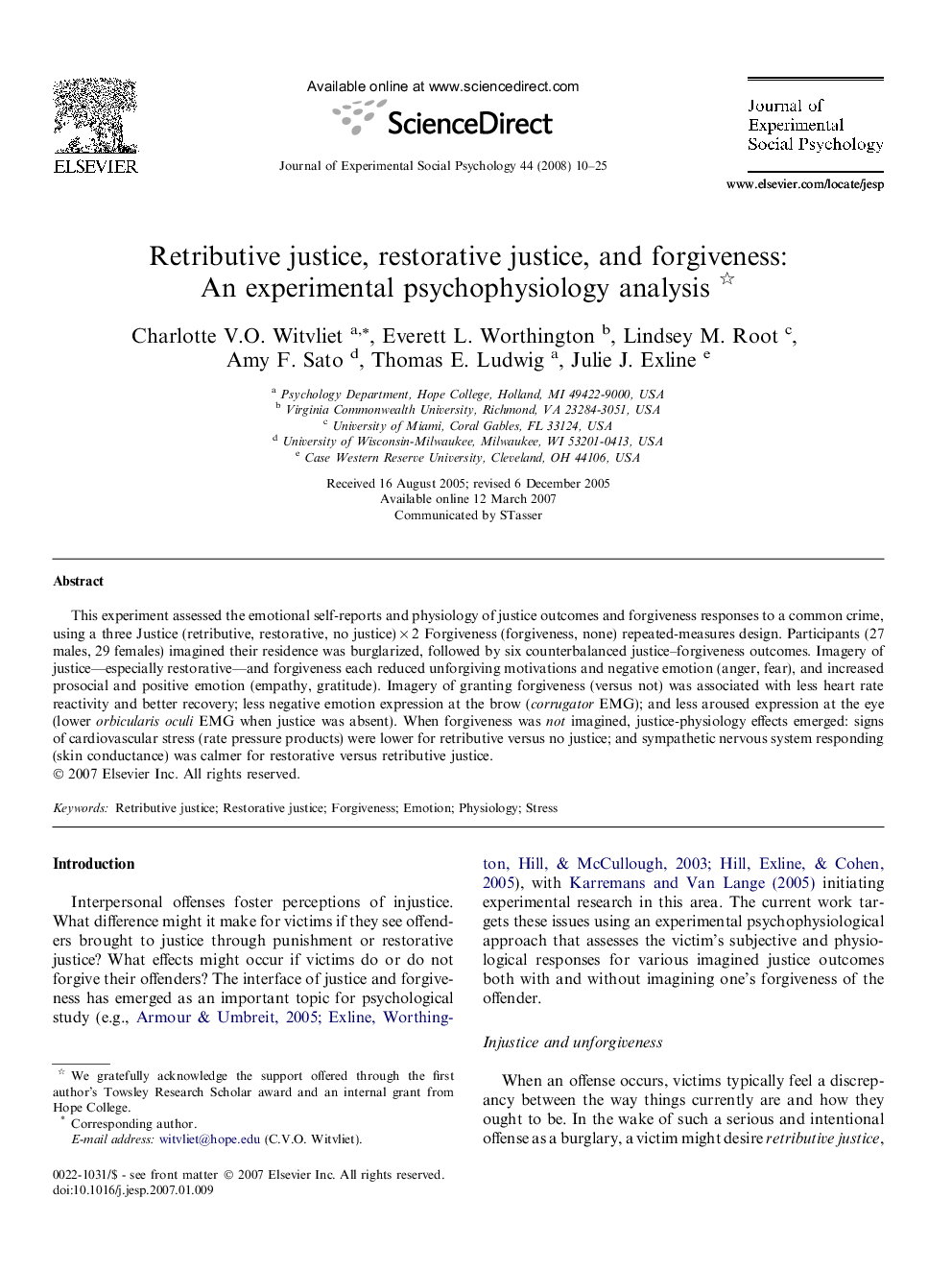| Article ID | Journal | Published Year | Pages | File Type |
|---|---|---|---|---|
| 948303 | Journal of Experimental Social Psychology | 2008 | 16 Pages |
This experiment assessed the emotional self-reports and physiology of justice outcomes and forgiveness responses to a common crime, using a three Justice (retributive, restorative, no justice) × 2 Forgiveness (forgiveness, none) repeated-measures design. Participants (27 males, 29 females) imagined their residence was burglarized, followed by six counterbalanced justice–forgiveness outcomes. Imagery of justice—especially restorative—and forgiveness each reduced unforgiving motivations and negative emotion (anger, fear), and increased prosocial and positive emotion (empathy, gratitude). Imagery of granting forgiveness (versus not) was associated with less heart rate reactivity and better recovery; less negative emotion expression at the brow (corrugator EMG); and less aroused expression at the eye (lower orbicularis oculi EMG when justice was absent). When forgiveness was not imagined, justice-physiology effects emerged: signs of cardiovascular stress (rate pressure products) were lower for retributive versus no justice; and sympathetic nervous system responding (skin conductance) was calmer for restorative versus retributive justice.
